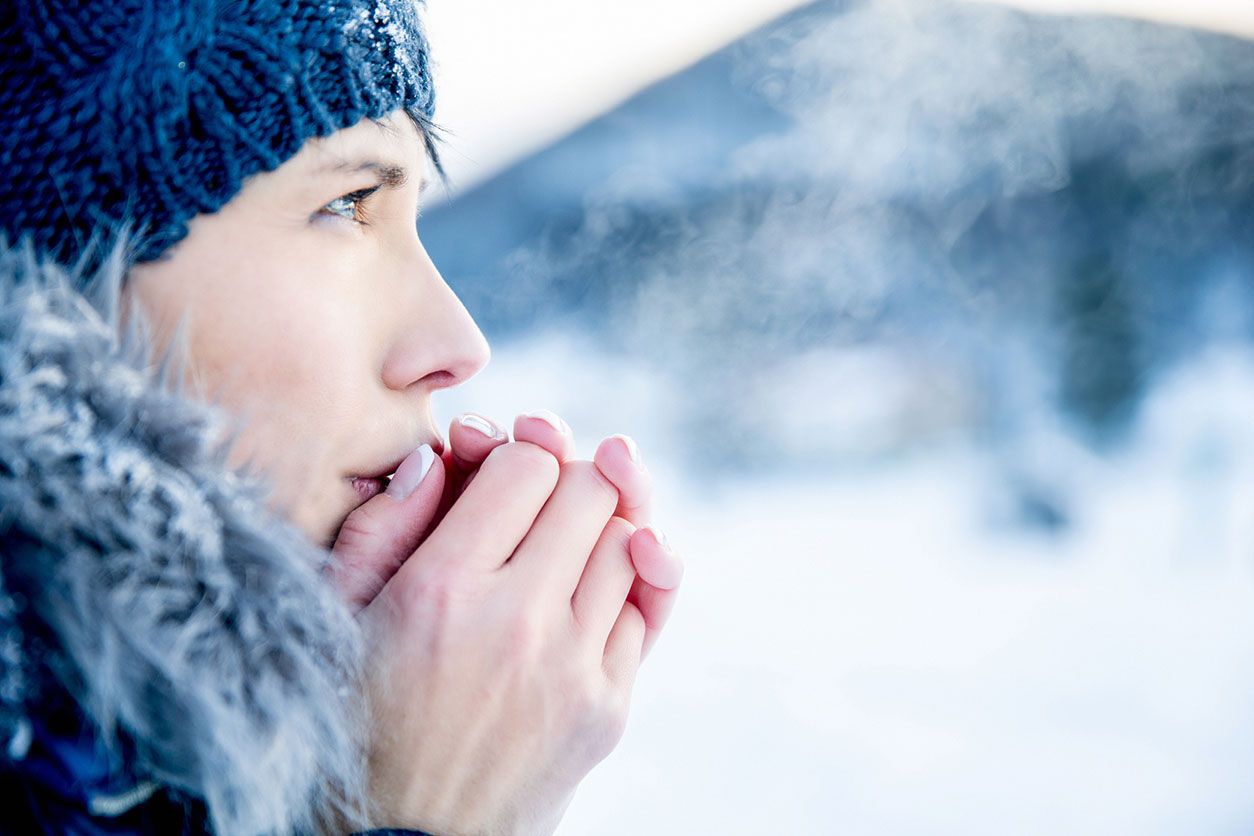Cold Hands: Winter Weather or Raynaud's Phenomenon or Disease?

It’s not unusual to find yourself experiencing moments where your hands feel icy cold, especially during winter. Yet, do those instances of cold hands persist into the summer as well? If you’ve noticed discoloration or simply having cold hands when there’s no obvious reason to cause them, you might be experiencing Raynaud’s Phenomenon or Disease.
The classic holiday scene with family and friends gathered around a crackling fireplace is a quaint and cozy feeling we all enjoy. There’s nothing more comforting than coming in from the cold and warming your hands by a fire. Yet, if you crave that feeling of warmth on your hands even when it’s not so cold outside, you might be feeling more than just winter’s chill.
Excessively cold hands are a symptom of something beyond just a visit from Jack Frost. There are three main conditions that unusual hand coldness can relate to and it’s crucial to take a hands-on approach to keep your hands healthy.
Cold Hand Syndrome
There is a reason after all for your excessively cold hands and it goes by the straightforward name of Cold Hand Syndrome. While it’s not uncommon for your hands to feel cold at times as your body regulates its temperature, there are some indications that your cold hands are indeed out of the ordinary:
- Discomfort or pain in fingers during cold temperatures
- Longer than usual healing time for injuries on hands and fingers
- Swelling in the fingers or hands
- Pain from touching cold and frozen materials
- Discoloration of the hands and fingers, sometimes changing to blue, red, or white
If you’ve experienced several of these symptoms, your cold hands are more than just a random occurrence—they’re a syndrome. The cause of your cold hands likely has to do with blood flow, or rather, the lack of it. Vasoconstriction refers to the condition in which your blood vessels within the hands are shrunken, blocking the flow of blood. The same cold-hand outcome can also be caused by the opposite condition: vaso-occlusion. In this situation, your blood vessels are stronger than normal, which also restricts the flow of blood.
While Cold Hand Syndrome is certainly uncomfortable, you may have learned to adjust to the condition. Yet, having your hands checked out by a specialist, such as those available at MidAmerica Orthopaedics, is vital for ensuring nothing else is at play.
In some instances, cold hands can also be caused by nerve damage or another condition such as Raynaud’s Phenomenon or Raynaud’s Disease.
About Raynaud’s Phenomenon
This condition is the kind of issue that is typically only recognized by those who’ve experienced it or know someone who has. While it’s not the most well-known condition, it does affect more than 200,000 people per year within the United States. It’s also a chronic condition, meaning that you can experience the symptoms and outcomes for many years or indefinitely. This is one of the many reasons a speedy and accurate diagnosis is crucial.
To clear any confusion, there is a difference between Raynaud’s Disease and Raynaud’s Phenomenon. For the latter, the cause may be linked to an underlying autoimmune disorder that spurs on the interruption of blood flow, making Raynaud’s Phenomenon a vascular disease.
Symptoms of Raynaud’s Phenomenon can range in frequency and severity, but generally manifest as:
- Skin discoloration (often upon exposure to cold)
- Mild tingling or numbness, even pain
- Ulcers on the fingers or gangrene
There are numerous methods for treating Raynaud’s Phenomenon, some of which include medications and hand-vibrating tools. There is no blood test for this condition, so your doctor may request various other blood tests to narrow down the cause of your hand woes. For this reason, seeking out a specialist to ensure you receive the proper diagnosis is crucial.
About Raynaud’s Disease
Raynaud’s Disease is much like Raynaud’s Phenomenon, though it’s more common. However, the good news about this condition is that it’s often less severe. This disease is also referred to as Primary Raynaud’s, while Raynaud’s Phenomenon is called Secondary Raynaud’s.
Unlike Secondary Raynaud’s, the cause of Raynaud’s Disease is entirely unknown. There are some risk factors for this condition:
- Living in colder climates
- Female
- Above age 30
- Family history of Raynaud’s Disease
The symptoms of Raynaud’s Disease are unpleasant, with feelings of numbness and stinging as well as skin discoloration. However, treatment is available to manage and minimize the condition.
The specialist at MidAmerica Orthopaedics Hand to Shoulder Clinic can help you properly diagnose and treat your cold hands to determine the cause. If you have noticed this symptom and are unsure of what’s causing it, give us a call at 708-237-7200 or schedule an appointment with our specialists today.

